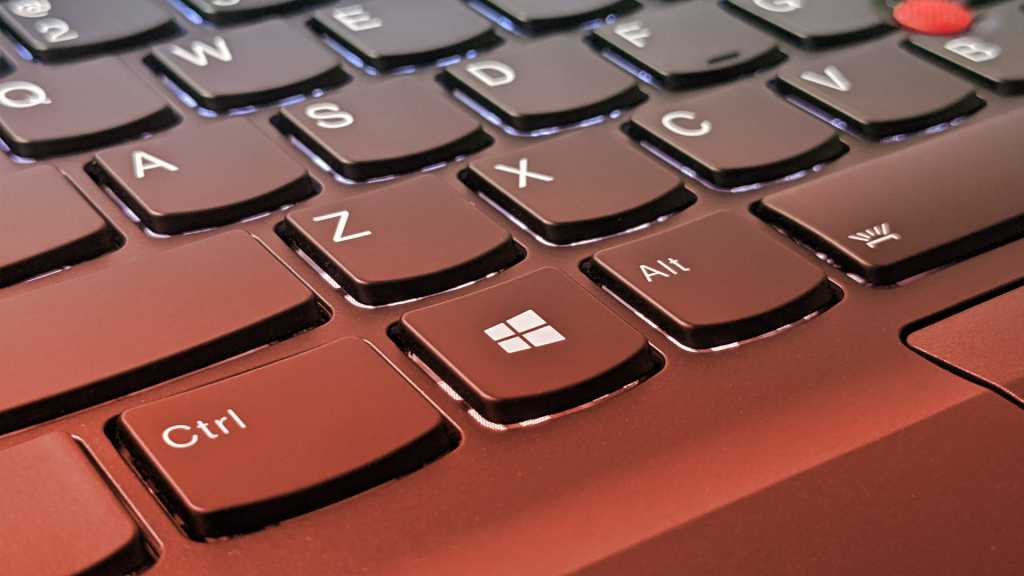I hate to state the obvious, but it needs to be said. Keyboards are important. In fact, I’d argue they’re the most important peripheral of them all, as they allow us to communicate with our computers. Whether you’re working or gaming, chances are you spend a great deal of time typing on a keyboard. But if you’ve ever read a keyboard review and found yourself by confused by terms like low travel, travel distance, mushy keys, bottoming out, and so on… don’t worry, you’re not alone. If you’re looking to upgrade your keyboard or to better understand the jargon, I’ve got you covered. Read on to learn more.
First, let’s start with the basics. Many non-mechanical keyboards have rubber domes underneath their keycaps. These types of keyboards are known as membrane keyboards and they’re pretty common. The rubber domes are inexpensive to manufacture, sure, but they don’t offer much tactile feedback (aka feeling the bump). If you’ve ever used a bad keyboard, you probably know what it feels like. The board may feel cramped and the keys mushy and unpleasant. In other words, there are no satisfying clicking sounds or bounce back from the keys.
What does travel even mean?
You have to push a key down in order for the computer to register the keystroke, right? Well, the distance the key needs to travel in order to fully depress and send a command to the computer’s brain is the travel distance. This distance is measured in millimeters. When it comes to optimal travel distance, it really boils down to personal preference. For example, the standard distance of a full travel keyboard is around 4mm. Longer key travel is better for most people in terms of accuracy and comfort. Laptop keyboards don’t have much travel, as there’s not much real estate to work with.
Membrane keyboards vs. mechanical
The main difference between membrane keyboards and mechanical keyboards is the overall feel of the keypress. Membrane keyboards feel soft because of the rubber domes underneath the keycaps, so they don’t offer much tactile feedback. Mechanical keyboards, on the other hand, have keys that spring back after you press down on them. Instead of rubber domes, there are switches under the keycaps, which allow you to type more accurately.
If you play games often or just like pounding the hell out of your keys, a mechanical keyboard might be a better option, as they offer great feedback and are less prone to accidental clicks. That said, they’re expensive and make a ton of noise due to the click-clacking of the keys. Membrane keyboards are quiet, inexpensive, and more resistant against grime or liquid. Both types of keyboards can have either full or low travel distance.
Low travel keyboard
Low travel keyboards have a key distance of around 1.0 to 2.5mm. That means it takes less pressure or effort to press the key down. If you’ve ever seen or used a scissor-switch keyboard, you’ll notice that, on many of them, the keys sit almost flush with the base. When it comes to shorter or low travel keyboards, sometimes it’s difficult to know when a key is being pressed down or not. That said, they’re usually smaller and more portable as well as pretty quiet to type on.
Full travel keyboard
The keys on a full travel keyboard will drop down to 3.0mm or higher before bottoming out (aka when a key reaches its full depth). If you like to hammer on the the keys, then you should consider a full travel keyboard. Not only does longer travel help prevent accidental keystrokes, but it also cushions your fingers from hard presses. Most mechanical keyboards have a full travel distance. They’re also incredibly modifiable and durable.
Leave a Reply Cancel reply
document.addEventListener(‘DOMContentLoaded’, function () {
var commentForms = document.getElementsByClassName(‘jetpack_remote_comment’);
for (var i = 0; i < commentForms.length; i++) {
commentForms[i].allowTransparency = false;
commentForms.scrolling = 'no';
}
});
<!–
